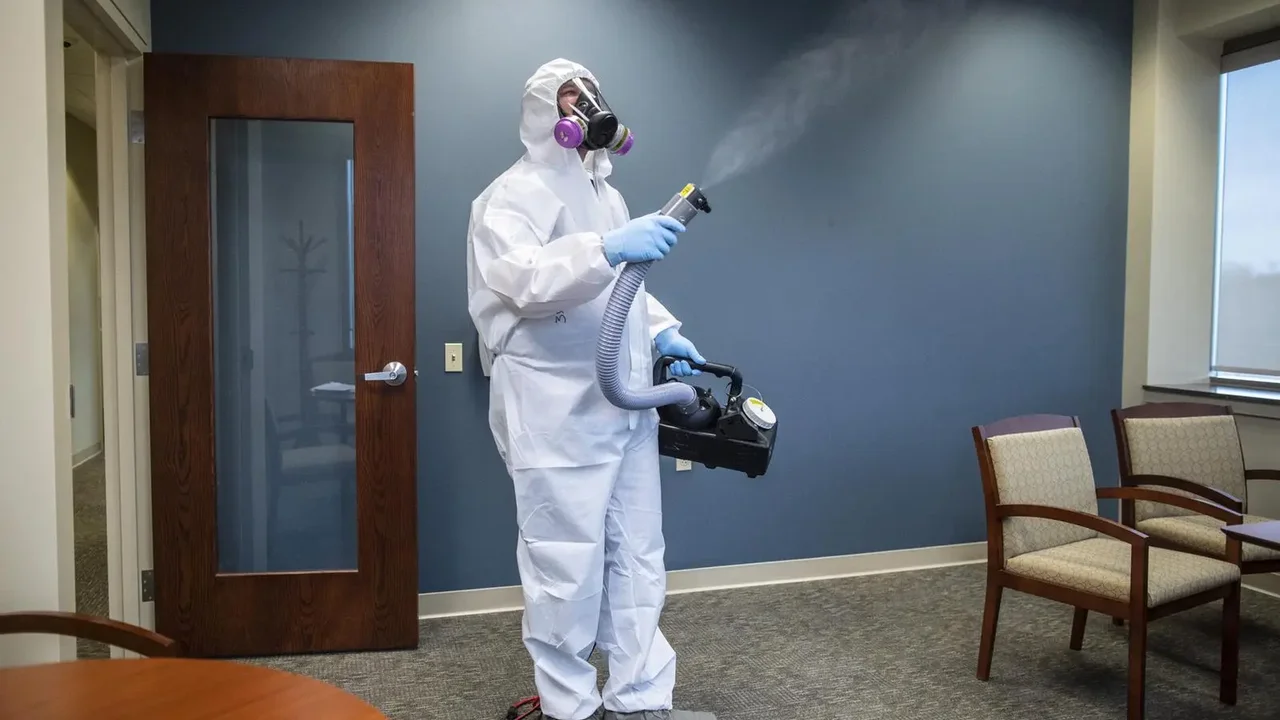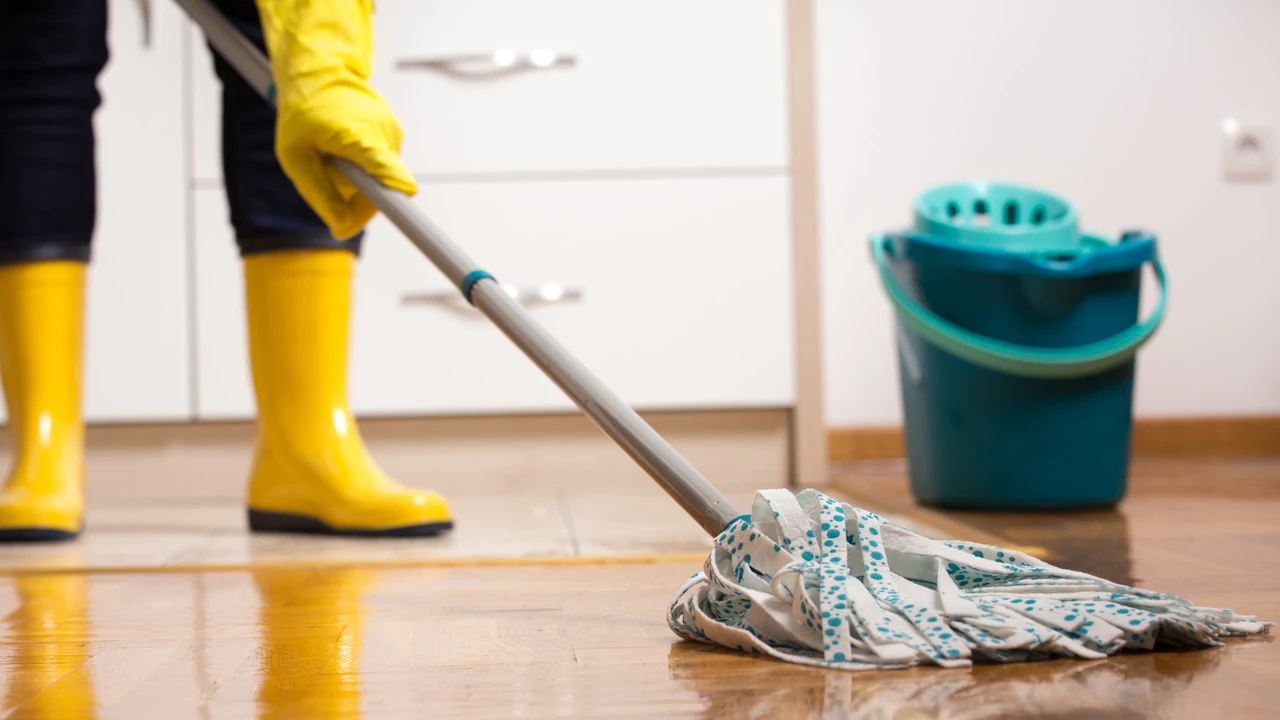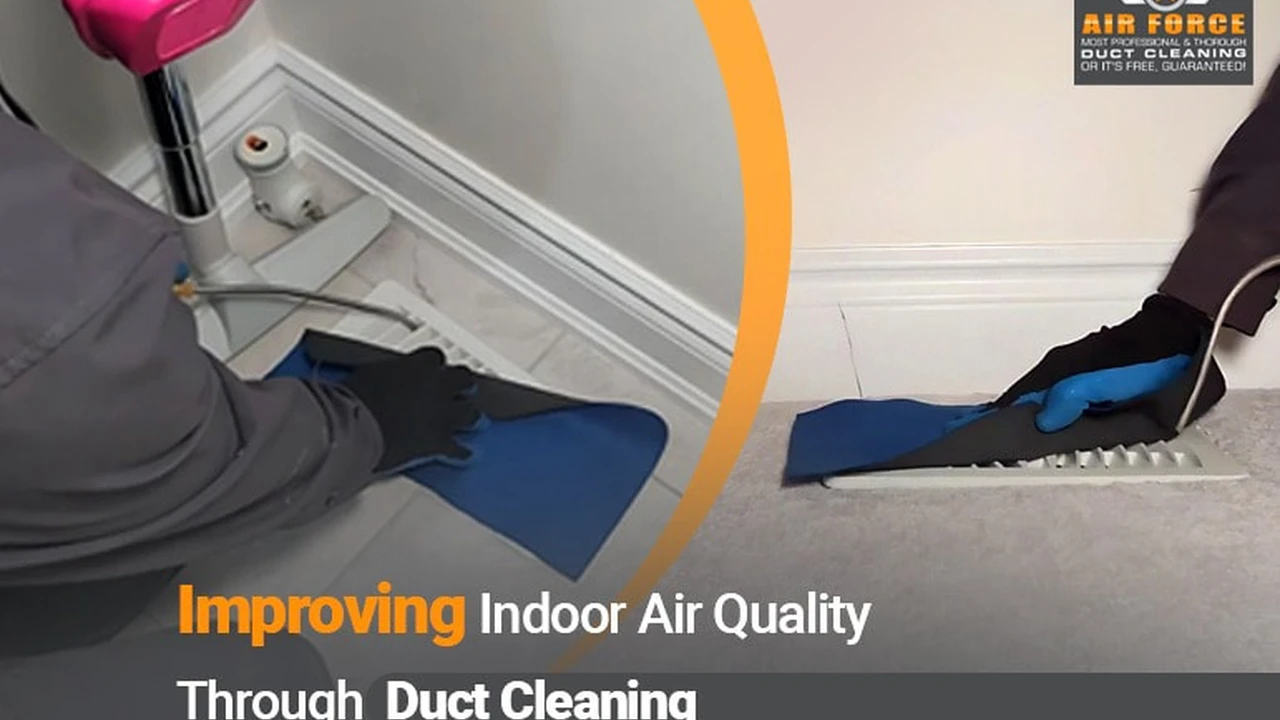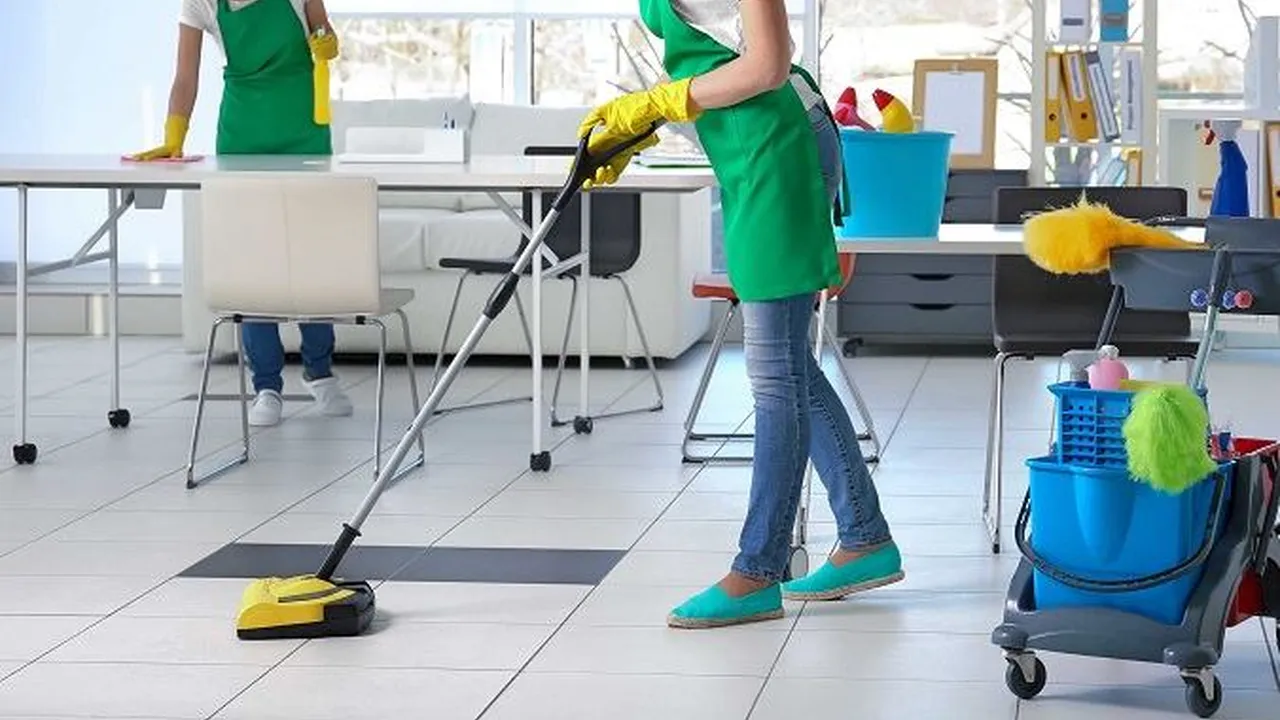Disinfection Services: Protecting Against Germs and Viruses

Understanding the Importance of Disinfection Services Germ Control
Hey there! Let's talk about something super important these days: disinfection. We're not just talking about a quick wipe-down with a kitchen cleaner. We're diving into disinfection services, which are designed to seriously knock out germs and viruses. Why is this so crucial? Well, think about it. We're constantly bombarded with bacteria and viruses, especially in high-traffic areas like offices, schools, and even our own homes. These little buggers can cause all sorts of illnesses, from the common cold to more serious infections. That's where professional disinfection services come in. They use specialized equipment and EPA-approved disinfectants to create a safer, healthier environment. It's not just about cleaning; it's about protecting yourself, your family, and your community. Let's get into the nitty-gritty!
What Are Disinfection Services Exactly? Understanding the Process
So, what exactly do disinfection services entail? It's more than just spraying some cleaner and calling it a day. A professional disinfection service typically involves a multi-step process. First, they'll assess the area to identify high-touch surfaces and potential problem areas. Then, they'll use specialized equipment, like electrostatic sprayers or foggers, to apply a disinfectant that's effective against a wide range of pathogens. These disinfectants are often hospital-grade and EPA-registered, meaning they've been tested and approved for use against specific viruses and bacteria. The process ensures that the disinfectant reaches even hard-to-reach areas, providing thorough coverage. It's a targeted approach to eliminate germs and create a healthier indoor environment. Think of it as a deep clean, but on a microscopic level.
Electrostatic Spraying vs Fogging Which Disinfection Method is Best?
Okay, let's talk about the tools of the trade. Two popular methods are electrostatic spraying and fogging. Electrostatic spraying uses a specialized nozzle to give disinfectant droplets an electrical charge. This charge makes the droplets attracted to surfaces, even hard-to-reach areas. Think of it like static cling, but for germ-killing power! It's great for covering large areas quickly and efficiently. Fogging, on the other hand, uses a fogger to create a fine mist of disinfectant that fills the air. This mist settles on surfaces, providing broad coverage. Fogging is especially useful for disinfecting enclosed spaces with lots of nooks and crannies. So, which is better? It depends on the situation. Electrostatic spraying is often preferred for its targeted approach and ability to adhere to surfaces. Fogging is ideal for disinfecting large, open areas. Many professional services use a combination of both methods for maximum effectiveness.
Choosing the Right Disinfectant EPA Registered Products
Not all disinfectants are created equal! It's crucial to choose a disinfectant that's both effective and safe. Look for products that are EPA-registered, meaning they've been tested and approved for use against specific viruses and bacteria. Pay attention to the active ingredients. Common disinfectants include hydrogen peroxide, quaternary ammonium compounds (quats), and hypochlorous acid. Each has its own advantages and disadvantages. For example, hydrogen peroxide is a powerful disinfectant that's relatively safe for the environment. Quats are effective against a broad range of pathogens but can leave a residue. Hypochlorous acid is gentle and effective, making it a good choice for sensitive environments. Always read the label carefully and follow the manufacturer's instructions. And if you're not sure which disinfectant is right for you, consult with a professional disinfection service. They can help you choose a product that's both effective and appropriate for your needs.
Disinfection Services in Different Environments Home Office School
Disinfection services aren't just for hospitals anymore! They're increasingly common in a variety of environments. In homes, disinfection services can help protect families from common illnesses, especially during cold and flu season. They're also beneficial for people with allergies or weakened immune systems. In offices, disinfection services can reduce the spread of germs and viruses, leading to fewer sick days and increased productivity. Schools are breeding grounds for germs, so disinfection services are essential for protecting students and staff. They can help prevent outbreaks of common illnesses like the flu and norovirus. Disinfection services are also used in healthcare facilities, restaurants, gyms, and other public spaces. Anywhere where people gather, there's a risk of spreading germs. Disinfection services can help mitigate that risk and create a safer environment for everyone.
DIY Disinfection vs Professional Services Which is Right for You?
So, can you just DIY your disinfection? Sure, you can grab some disinfectant wipes and spray some cleaner. But here's the deal: professional disinfection services offer a level of thoroughness and expertise that's hard to achieve on your own. They use specialized equipment and EPA-registered disinfectants, and they know how to target high-touch surfaces and problem areas. They also understand the proper dwell times and application techniques to ensure that the disinfectant is effective. DIY disinfection can be a good option for maintaining a clean environment, but for deep cleaning and protection against serious pathogens, professional services are the way to go. Think of it like this: you can wash your car yourself, but sometimes you need to take it to a professional detailer for a truly deep clean.
Cost of Disinfection Services Factors Affecting the Price
Alright, let's talk money. The cost of disinfection services can vary depending on several factors. The size of the area being disinfected is a major factor. Larger spaces will naturally cost more to disinfect than smaller ones. The type of service also affects the price. A basic disinfection service will typically cost less than a more comprehensive service that includes deep cleaning and surface testing. The frequency of service is another consideration. Regular disinfection services will often come with a discounted rate. Finally, the location of the property can impact the price. Disinfection services in urban areas may be more expensive than those in rural areas. To get an accurate estimate, it's best to contact several disinfection companies and get quotes. Be sure to ask about their pricing structure and what's included in their services.
Finding a Reputable Disinfection Service What to Look For
Finding the right disinfection service is key. You want a company that's reliable, experienced, and uses safe and effective products. Start by asking for recommendations from friends, family, or colleagues. Check online reviews and ratings to get a sense of the company's reputation. Make sure the company is licensed and insured. This will protect you in case of any accidents or damages. Ask about the company's experience and training. How long have they been in business? What kind of training do their technicians receive? Inquire about the disinfectants they use. Are they EPA-registered? Are they safe for your family and pets? Finally, get a written estimate that clearly outlines the services being provided and the cost. Don't be afraid to ask questions and compare quotes from different companies. Choosing the right disinfection service is an investment in your health and safety.
Maintaining a Disinfected Environment After the Service Tips and Tricks
Okay, you've had your space professionally disinfected. Now what? It's important to maintain a clean and disinfected environment to prevent the spread of germs and viruses. Here are a few tips: Regularly clean and disinfect high-touch surfaces like doorknobs, light switches, and countertops. Wash your hands frequently with soap and water, especially after being in public places. Avoid touching your face, especially your eyes, nose, and mouth. Ventilate your space regularly by opening windows and doors. Consider using an air purifier to remove airborne particles and pollutants. Encourage everyone in your household or workplace to practice good hygiene habits. And finally, schedule regular disinfection services to maintain a consistently clean and healthy environment. Think of it as preventative maintenance for your health!
Product Recommendations for Post-Disinfection Maintenance
Let's talk about some specific products you can use to maintain a disinfected environment *after* the professional service. Remember, these are for upkeep, not replacements for a professional deep clean. * Lysol Disinfectant Spray (around $5-7): A classic for a reason. It's EPA-registered and effective against a wide range of viruses and bacteria. Use it on hard, non-porous surfaces like doorknobs, light switches, and countertops. The scent can be strong, so ventilate well. * Clorox Disinfecting Wipes (around $4-6): Convenient for quick cleanups. Great for wiping down surfaces like keyboards, phones, and shopping cart handles. Make sure the surface stays visibly wet for the recommended contact time (usually around 4 minutes) to ensure proper disinfection. * Puracy Natural Multi-Surface Cleaner (around $10-12): A plant-based option that's gentle and effective. While not specifically a disinfectant, it's great for general cleaning and can help reduce the number of germs on surfaces. Use it on a variety of surfaces, including wood, glass, and stainless steel. * Force of Nature Disinfectant (starter kit around $60, refills around $10): An EPA-registered disinfectant made from simple ingredients like salt, water, and vinegar. It's safe for use around kids and pets and effective against a variety of germs. It requires a special appliance to create the disinfectant solution. When choosing products, consider the surface you're cleaning, the level of disinfection you need, and any sensitivities you may have. Always read the label and follow the manufacturer's instructions.
Product Comparisons and Usage Scenarios
Let's break down those product recommendations a bit more. For high-touch surfaces in a public space, like an office breakroom, Lysol Disinfectant Spray is a solid choice. It's readily available, effective, and provides broad-spectrum disinfection. However, for a home with young children, you might prefer Force of Nature. It's just as effective but uses gentler ingredients. If you need to quickly wipe down a shopping cart handle, Clorox Disinfecting Wipes are your best bet. They're convenient and portable. For general cleaning and reducing the germ load on surfaces like wooden furniture, Puracy Natural Multi-Surface Cleaner is a good option. It's gentle and won't damage surfaces. When comparing these products, consider the active ingredients, the EPA registration, the safety profile, and the ease of use. Also, think about the specific situation and the level of disinfection required.
:max_bytes(150000):strip_icc()/277019-baked-pork-chops-with-cream-of-mushroom-soup-DDMFS-beauty-4x3-BG-7505-5762b731cf30447d9cbbbbbf387beafa.jpg)





